Patterns in architectural design are very essential part. We explore here Herringbone Pattern Working with many interior designers and architects, I’ve had the pleasure of witnessing various design trends come and go. this one pattern is very trendy to captivate homeowners and designers to make homes look luxurious. In this article, we will explore the complete herringbone pattern and how it adds style to your home décor. So, let’s dive in!
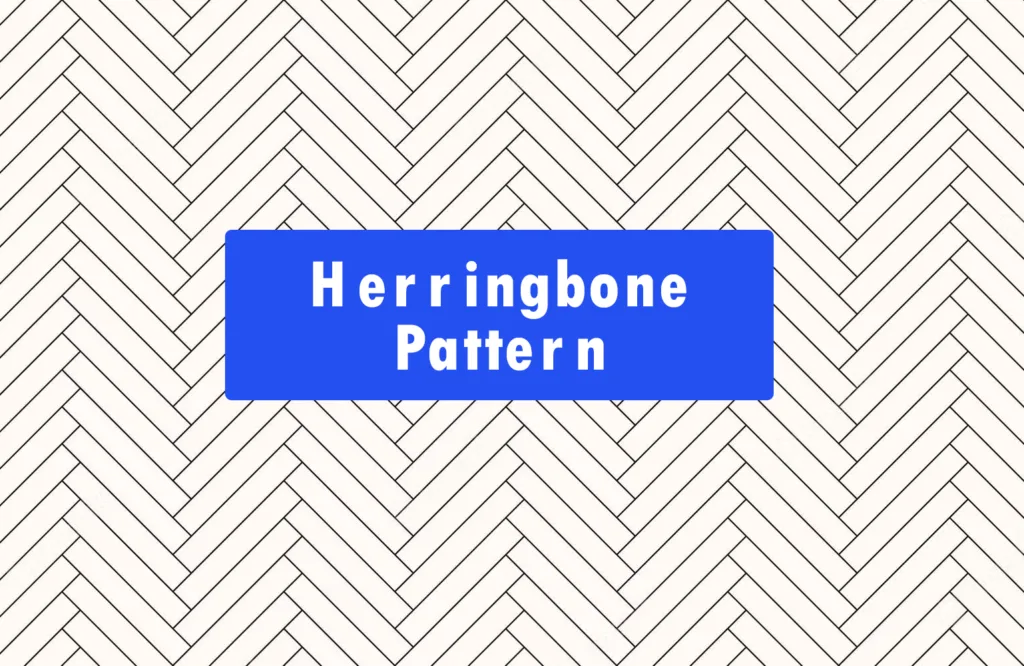
The herringbone pattern is a distinctive and visually appealing arrangement of rectangular shapes, resembling the bones of a fish. Its interlocking design creates a sense of movement and adds depth to any space. From floors to walls, furniture, and accessories, the herringbone pattern offers endless possibilities for adding character and charm to your home.
Adding depth and dimension to any surface or shape is One of the unique characteristics of the herringbone pattern. this pattern can be found in various forms, from walls to flooring and tiles to fabrics and more in architectural designs. The herringbone pattern is not only visually appealing but also offers practical benefits. Its interlocking design provides stability and strength, making it suitable for high-traffic areas. from classic and traditional to modern and contemporary this pattern’s versatility allows it to be adapted to all types of design styles,
By understanding the intricacies of the herringbone pattern, you can appreciate its historical significance and unlock its potential to enhance your interior design. Whether used as a flooring choice, a fabric motif, or a decorative accent, the herringbone pattern adds a timeless elegance that never fails to impress.

The chevron and herringbone patterns are often confused due to their similar zigzag appearance, but they have distinct differences:
| S.No. | Herringbone Pattern | Chevron Pattern |
| 1 | Zigzag Direction: The herringbone pattern consists of interlocking rectangular shapes forming a diagonal zigzag pattern, resembling the skeletal structure of a herring fish. | Zigzag Direction: The chevron pattern forms a continuous V-shaped zigzag, with each side of the “V” pointing towards each other. |
| 2 | Angle: The angle between the rectangular shapes is usually set at 45 degrees, but the overall appearance is staggered and overlapping. | Angle: The angle between the arms of the “V” is typically sharp, usually set at 45 degrees. |
| 3 | Visual Flow: The herringbone pattern has a segmented and fragmented visual flow due to the interlocking rectangles, creating a sense of movement and dynamic appeal. | Visual Flow: The chevron pattern creates a seamless and uninterrupted visual flow, resembling a series of mirrored arrows pointing toward each other. |
| 4 | Organic and Textural: The herringbone pattern often showcases a more organic and textured look, with individual pieces visibly distinct and noticeable. | Symmetry: The chevron pattern exhibits symmetrical balance and uniformity, with each side of the “V” being equal in length. |
In summary, the chevron pattern exhibits a continuous and symmetrical V-shaped zigzag, while the Herringbone Pattern features an interlocking, staggered, and more texturally appealing diagonal zigzag arrangement.
Dating back centuries, the herringbone pattern has a rich history in architecture and design. Originally used in Roman road construction, it has evolved to become a symbol of elegance and sophistication. Discover the fascinating origins of the herringbone pattern and its cultural significance throughout the ages.

The name “herringbone” stems from its resemblance to the skeletal structure of a herring fish. The pattern consists of a series of interlocking rectangular shapes, creating a zigzag arrangement that is visually captivating. Its distinctive design has been utilized in various architectural styles throughout history.
Roman Empire used Herringbone patterns in the construction of roads. The pattern provided strength and stability to the roads, allowing them to withstand heavy traffic and the test of time. This innovative use of the herringbone pattern showcased the Romans’ advanced engineering skills.
Over the centuries, the herringbone pattern found its way into different artistic disciplines, including textiles, masonry, and interior design. It became a popular motif in fabrics, adding texture and visual interest to clothing and home décor. In architecture, the herringbone pattern adorned floors, walls, and ceilings, bringing a touch of sophistication and charm to grand structures.
The enduring appeal of the herringbone pattern lies in its ability to transcend time and trends. From Renaissance palaces to contemporary interiors, herringbone continues to be embraced by designers and homeowners worldwide.
Today, the herringbone pattern remains a beloved design choice, adding a sense of timeless elegance to any space. Its rich history and cultural significance make it more than just a pattern; it’s a testament to human creativity and ingenuity. Whether in flooring, fabrics, or architectural elements, embracing the herringbone pattern is a way to honor tradition while creating visually stunning and captivating environments.

One of the most popular applications of the herringbone pattern is in flooring. Whether you prefer hardwood, tile, or laminate, herringbone flooring can instantly transform your space into a statement of style. Explore different materials and installation techniques to achieve the perfect herringbone floor that suits your taste and lifestyle. Incorporating herringbone patterns in flooring is a fantastic way to elevate the aesthetic appeal of any space. Herringbone flooring adds a touch of sophistication and timeless elegance, making it a popular choice among homeowners and designers alike.
One of the key advantages of herringbone flooring is its versatility. various decor materials like- hardwood, laminate, tile, or even luxury vinyl are used for installation these materials have their own unique benefits and aesthetic qualities, so you can select the one design best suits your personal style and practical requirements. When it comes to hardwood herringbone flooring, the natural beauty of the wood grain enhances the visual impact of the pattern. Oak, walnut, and maple are popular choices for achieving a classic and luxurious look. Laminate and luxury vinyl options offer durability and affordability while mimicking the appearance of real wood. Installing herringbone flooring requires precision and attention to detail. The rectangular planks or tiles are arranged at a 45-degree angle, interlocking with one another to create the characteristic zigzag pattern. This installation method adds depth and dimension to the floor, making it a striking focal point in any room.
Herringbone flooring can be incorporated in various areas of the home. It works wonderfully in entryways, living rooms, kitchens, and dining areas, adding a touch of elegance to high-traffic spaces. The pattern can also be extended to hallways and bedrooms, creating a cohesive and visually appealing flow throughout the home. Whether you prefer a traditional, rustic, or modern style, herringbone flooring can be adapted to suit your desired aesthetic. It pairs beautifully with a wide range of interior design elements, from minimalist and contemporary to eclectic and vintage. Incorporating herringbone in flooring not only enhances the visual appeal of your space but also adds value to your home. Its timeless charm and enduring popularity make it a worthwhile investment that will stand the test of time.

Move beyond traditional paint or wallpaper and explore the stunning possibilities of herringbone patterns on your walls. From accent walls to full-room installations, herringbone can add texture, dimension, and a touch of modernity to your living spaces. Discover various wall treatments and techniques to create an eye-catching herringbone design. Elevating walls with herringbone patterns bring a touch of sophistication and visual intrigue to any space. This unique design choice adds texture, depth, and a sense of movement to walls, creating a stunning focal point. Whether achieved through paint, wallpaper, or tile, herringbone patterns transform plain walls into works of art. The interlocking arrangement of the rectangular shapes adds a dynamic element that captivates the eye. From accent walls to full-room installations, herringbone patterns offer endless possibilities for enhancing the overall aesthetic of your home. Elevate your walls with the timeless elegance of herringbone and make a stylish statement in your living spaces.
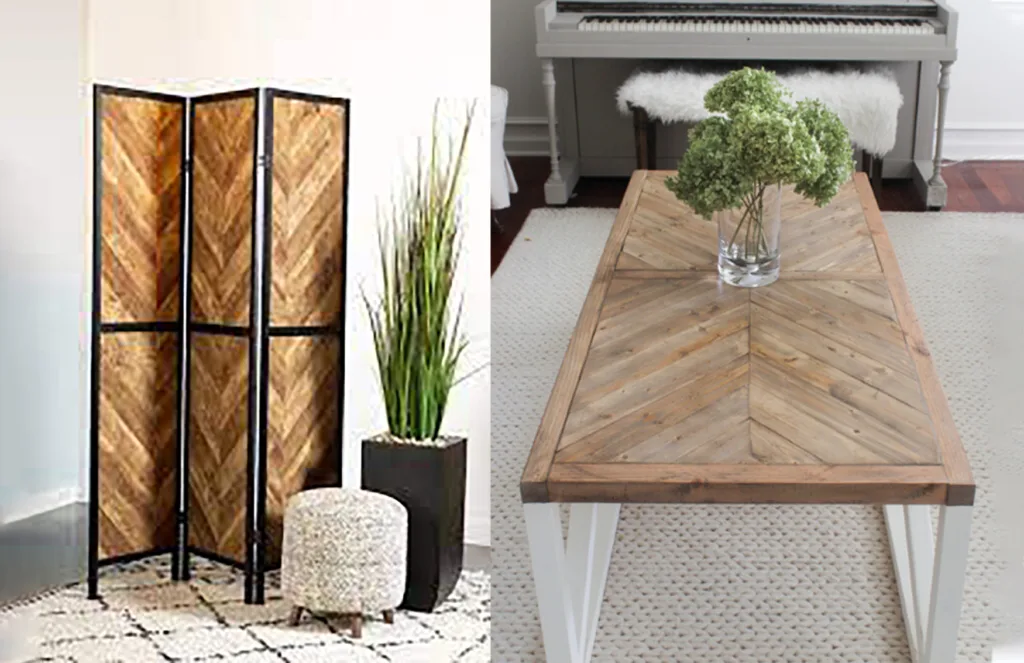
Bring herringbone into your furniture and upholstery choices to infuse elegance and sophistication into your home. Whether it’s a herringbone-patterned sofa, chair, or headboard, these furniture pieces can become the focal point of your room and elevate its overall aesthetic. Uncover tips and tricks for selecting the perfect herringbone-inspired furniture.
Introducing herringbone patterns in furniture and upholstery brings a touch of sophistication and visual interest to your interior design. Whether it’s a herringbone-patterned chair, sofa, or even throw pillows, this design choice adds texture and elegance to your furniture pieces. The intricate zigzag arrangement creates a captivating visual effect that complements a variety of styles, from classic to contemporary. Herringbone upholstery can be incorporated into various color palettes, allowing you to customize the look to suit your personal taste. Embrace the timeless charm of herringbone in your furniture and upholstery selections to elevate the overall aesthetic of your living spaces.
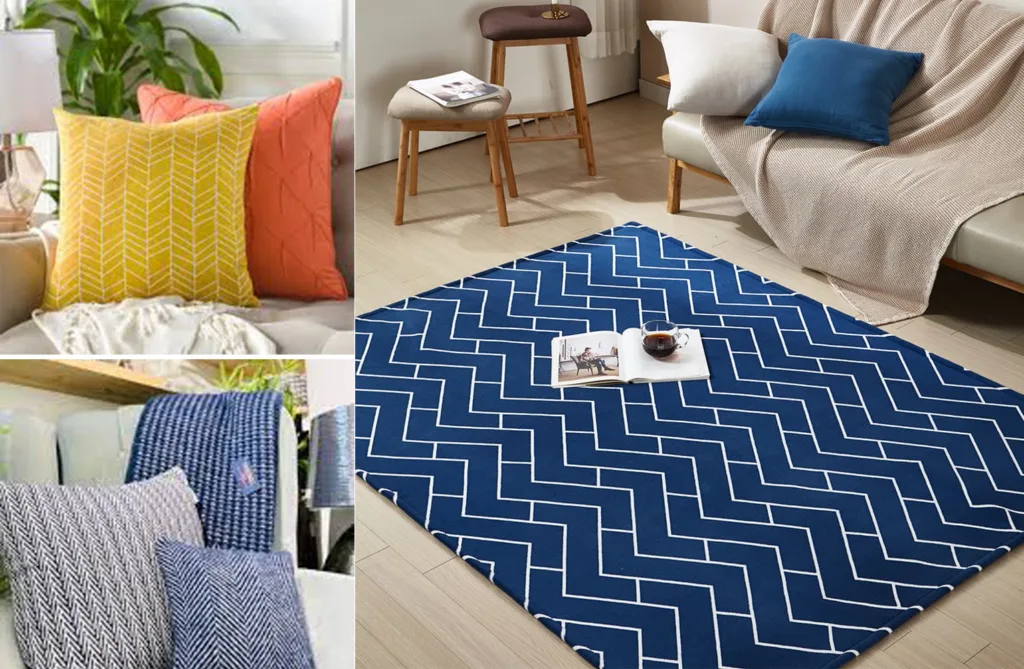
Small accents can make a big impact on interior design, and herringbone patterns are no exception. Explore how herringbone-inspired pillows, throws, rugs, and curtains can enhance the visual appeal of your living spaces. Discover creative ways to incorporate these accents seamlessly into your existing décor.
They offer a stylish and versatile way to incorporate this classic pattern into your home decor. Herringbone-patterned pillows can instantly elevate the look of a sofa or bed, adding a touch of sophistication and visual interest. The zigzag design creates a dynamic and eye-catching effect that enhances the overall aesthetic of the space. Similarly, herringbone rugs make a bold statement on floors, providing texture and pattern that complements various interior styles. Whether you prefer a small accent pillow or a large area rug, herringbone accents bring a timeless elegance that can seamlessly blend with both traditional and modern decor. Embrace the beauty of herringbone in your home by incorporating these accents, adding a touch of sophistication and charm to your living spaces.

Choosing the right color palette and materials is crucial when working with the herringbone pattern. Explore various color combinations and materials that complement the herringbone design, whether you prefer a classic monochromatic scheme or a vibrant burst of hues. Find inspiration to help you create a cohesive and visually stunning herringbone-inspired space. Choosing the right color palette and materials is crucial when working with herringbone design. The color palette sets the tone and mood of the space, while the materials determine the texture and overall aesthetic.
For a classic and timeless look, opt for neutral colors like shades of gray, beige, or white. These colors allow the herringbone pattern to take center stage and create a sense of elegance.
If you want to add a pop of color, consider using vibrant hues like deep blues, rich greens, or bold reds. These colors can make a bold statement and bring a contemporary twist to the traditional herringbone design.
When it comes to materials, hardwood is a popular choice for herringbone flooring, offering warmth and natural beauty. this pattern has a wide range of color options with durability because of its 45-degree angle and you can also explore other materials like ceramic or porcelain tiles. Additionally, consider the texture of the materials. Smooth and polished finishes create a sleek and modern feel, while distressed or reclaimed materials add a rustic and vintage charm.
By carefully selecting the color palette and materials for your herringbone design, you can create a space that reflects your personal style and showcases the beauty of this timeless pattern.

Herringbone patterns can be utilized beyond conventional applications. Discover unconventional ways to introduce herringbone elements in unexpected areas of your home, such as ceilings, staircases, or even backsplashes. Learn how these unique design choices can add visual interest and create a conversation piece in your home.
Creating visual interest with herringbone patterns is a surefire way to elevate your interior design. The intricate zigzag arrangement of the herringbone pattern adds a captivating and dynamic element to any space.
One of the key benefits of herringbone patterns is their ability to draw the eye and create a sense of movement. Whether used on floors, walls or as design accents, herringbone patterns instantly grab attention and make a statement.
To enhance visual interest, consider playing with color and material contrasts. Using contrasting colors or materials in your herringbone design can create a striking visual impact and add depth to the space. For example, combining light and dark wood tones or mixing glossy and matte finishes can amplify the pattern’s visual appeal.
Additionally, incorporating herringbone patterns in unexpected areas, such as ceilings or backsplashes, can add a surprising and unique touch to your design scheme.
By thoughtfully incorporating herringbone patterns and experimenting with color, material, and placement, you can create a visually intriguing and engaging space that will leave a lasting impression on anyone who enters.

The herringbone pattern is incredibly versatile and can be adapted to suit various home décor styles. Whether your style is modern, rustic, or eclectic, there’s a herringbone design that will complement your aesthetic. Explore different décor styles and learn how to incorporate herringbone seamlessly into each.
Herringbone patterns are incredibly versatile and can be incorporated into various home décor styles, adding a touch of elegance and sophistication. Here’s how herringbone can enhance different design aesthetics:
No matter the home décor style, herringbone patterns offer a timeless and versatile design choice that can elevate the overall look and feel of your space.

Embrace your creativity and embark on exciting DIY projects to incorporate herringbone touches in your home. From crafting herringbone-patterned wall art to repurposing materials into unique herringbone-inspired pieces, these projects offer a personal touch and a sense of accomplishment. Get inspired and bring your herringbone ideas to life.

To ensure your herringbone elements stand the test of time, it’s important to understand the maintenance and care they require. From cleaning hardwood floors to preserving herringbone patterns in upholstery, we’ll provide you with practical tips and expert advice to keep your herringbone design looking impeccable.
Proper maintenance and care are essential to preserve the beauty and longevity of herringbone elements in your home. Here are some tips to keep them looking their best:
By following these maintenance and care guidelines, you can ensure that your herringbone elements remain in excellent condition, retaining their beauty and enhancing the overall aesthetics of your home for years to come.
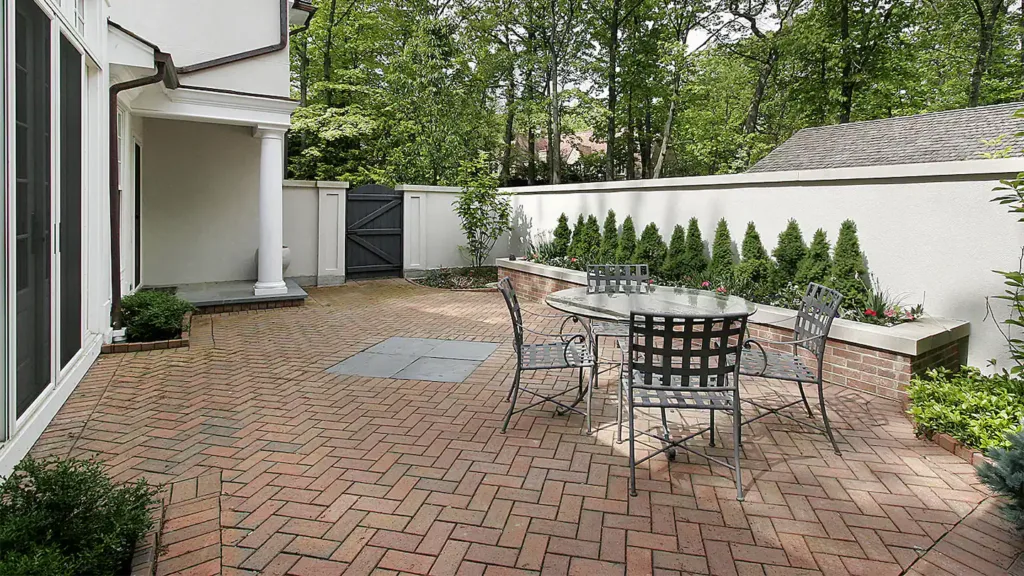
Extend the charm of herringbone beyond your interiors and into your outdoor spaces. Discover how herringbone patterns can be incorporated into patio flooring, garden pathways, or even exterior wall treatments. Elevate your outdoor living areas with the timeless beauty of herringbone.

Herringbone pattern brickwork is a stunning architectural feature that adds visual interest and texture to buildings. The herringbone pattern, with its interlocking arrangement of bricks at a 45-degree angle, creates a captivating zigzag effect. This pattern not only enhances the structural integrity of the brickwork but also adds a touch of elegance and sophistication. Herringbone pattern brick is commonly used for pathways, patios, and exterior facades, creating a timeless and visually appealing design. The distinctive pattern adds depth and character to any space, making herringbone pattern brick an excellent choice for both traditional and contemporary architectural styles.

Herringbone pattern tiling is a popular choice for adding a touch of style and visual appeal to floors, walls, and backsplashes. The interlocking arrangement of rectangular tiles creates a distinctive zigzag pattern that catches the eye. Herringbone tiling can be achieved with various materials such as ceramic, porcelain, or natural stone, allowing for versatility in design. Whether used in bathrooms, kitchens, or entryways, herringbone pattern tiling adds a sense of elegance and sophistication to any space. Its timeless charm and versatility make it a go-to choice for homeowners and designers looking to create a visually stunning and dynamic aesthetic.
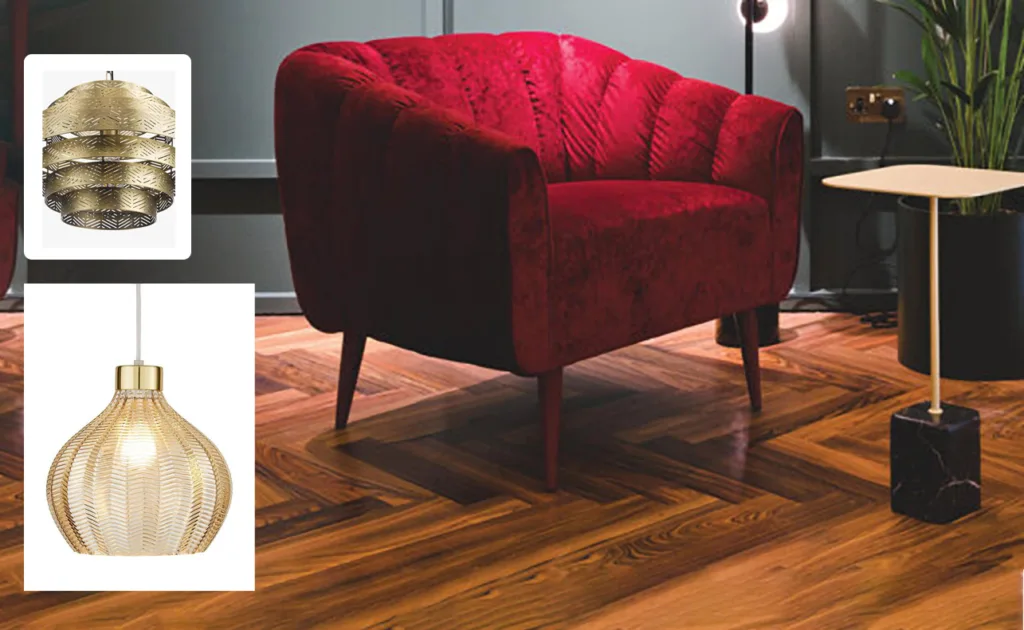
Lighting plays a crucial role in showcasing the beauty of herringbone patterns. Learn how to use different lighting techniques to accentuate the intricacies of the herringbone design. From ambient lighting to spotlights, create an atmosphere that highlights the elegance of your herringbone elements.
Dare to be bold and mix herringbone with other patterns to create a unique and eclectic look. Discover the art of pattern mixing and learn how to combine herringbone with stripes, florals, geometrics, or even animal prints. Unleash your creativity with patterns and shapes.
The double herringbone pattern is a captivating variation of the classic herringbone design that adds an extra layer of visual interest and complexity. In this pattern, two herringbone patterns are intertwined, creating a stunning effect that amplifies the dynamic nature of the original design. The double herringbone pattern offers a unique twist on the traditional zigzag arrangement, with an increased level of intricacy and detail. It adds depth and texture to surfaces such as floors, walls, and backsplashes, making a bold statement in any space. The double herringbone pattern is an excellent choice for those seeking a visually striking and sophisticated design that goes beyond the conventional herringbone pattern, adding an extra touch of elegance and creativity to their interior or architectural projects.
The herringbone pattern is not only visually captivating but can also increase the value of your home. Whether you’re planning to sell or simply want to elevate your living space, herringbone design elements can leave a lasting impression on potential buyers and visitors. Explore the ways in which herringbone can enhance your home’s value. in some of walls Motif Design is create with the herringbone pattern Design.
The herringbone pattern is a visually appealing arrangement of rectangular shapes that can be used in various aspects of home decor. It adds depth, dimension, and elegance to floors, walls, furniture, and accessories. The pattern has a zigzag direction and a fragmented visual flow, creating a sense of movement and appeal. It has historical significance and is widely embraced by designers and homeowners. Herringbone flooring, wall treatments, furniture upholstery, and small accents can enhance the overall aesthetic of a space. Choosing the right color palette and materials is crucial. Herringbone patterns can be used in unexpected areas like ceilings and backsplashes to create visual interest. The pattern can complement different home decor styles such as modern, rustic, and minimalist. Proper maintenance is important to preserve the beauty of herringbone elements. It can also be incorporated into outdoor spaces, such as patio flooring and garden pathways. Herringbone pattern brickwork and tiling are popular choices. Lighting techniques and mixing herringbone with other patterns can create unique and striking effects. Incorporating herringbone design elements can increase the value of a home.
Embracing the herringbone pattern in your home décor opens up a world of possibilities for creating stylish and sophisticated spaces. From flooring to walls, furniture, and accessories, the herringbone pattern offers a timeless elegance that never fails to impress. So, why not bring the beauty of herringbone into your home and let it weave its magic?
Ans:1 When choosing the right size herringbone pattern for your space, there are a few factors to consider. Let’s see-
Room Size: herringbone pattern depends on the size of the room and will play a significant role in determining the appropriate size. In larger rooms, you can opt for larger-sized herringbone patterns without overwhelming the space. Conversely, smaller rooms might benefit from smaller-sized patterns to maintain proportion and visual balance.
Scale and Proportion: Consider the scale and proportion of the room’s existing elements, such as furniture, fixtures, and architectural features. The herringbone pattern should harmonize with these elements rather than overpowering them. If you have large-scale furniture or bold architectural features, a larger herringbone pattern might complement the space better.
Tile Size: If you’re using tiles to create the herringbone pattern, the size of the tiles will impact the overall scale of the pattern.
Smaller tiles- 2×4 inches = a more intricate and detailed herringbone pattern.
Larger tiles- 6×12 inches = make a bolder and more prominent pattern.
Visual Effect: Think about the visual effect you want to achieve in the space. A smaller herringbone pattern can create a busier, more intricate look, while a larger pattern can give a sense of openness and visual simplicity. Consider the style and ambiance you want to achieve in the room and choose the herringbone size accordingly.
Personal Preference: Ultimately, your personal preference and aesthetic taste should guide your decision. Take into account what appeals to you visually and what aligns with the overall design concept of the space. Gather inspiration from design magazines, and online resources, or visit showrooms to see different herringbone patterns in person.
By considering these factors and combining them with your personal taste, you can select the right size herringbone pattern that enhances your space and creates the desired visual impact.
Ans:2 Installing a herringbone floor can be a challenging task, and it requires a certain level of skill and expertise. While it is possible to install a herringbone floor yourself, hiring a professional is generally recommended, especially if you lack experience with flooring installations. Here are a few points to consider:
1. Complexity: Installing a herringbone floor involves intricate cuts and precise measurements. The angle and orientation of the herringbone pattern require careful planning and attention to detail. If you have little or no experience with flooring installations, it can be difficult to achieve a professional-looking result.
2. Tools and Equipment: Installing a herringbone floor typically requires specialized tools and equipment, such as a miter saw, a table saw, a flooring nailer, and various measuring tools. Professionals are equipped with the necessary tools and have the expertise to use them effectively, ensuring accurate cuts and installations.
3. Time and Effort: Installing a herringbone floor is a time-consuming process. It involves preparing the subfloor, cutting and laying the individual pieces, and properly aligning them to create the herringbone pattern. If you have limited time or are unfamiliar with the installation process, it may be more efficient to hire a professional who can complete the job efficiently.
4. Warranty and Guarantees: Hiring a professional installer often comes with the advantage of warranties and guarantees. If any issues arise during or after the installation, professionals can address them and provide support. DIY installations may not come with such assurances, and any mistakes or problems could be costly to rectify.
5. Experience and Expertise: Professional installers have experience working with different types of flooring and are familiar with the specific requirements of installing a herringbone pattern. They can offer advice, troubleshoot potential issues, and ensure the floor is installed correctly, resulting in a high-quality and durable finish.
If you decide to install a herringbone floor yourself, it is essential to thoroughly research the process, gather the necessary tools and materials, and follow detailed installation instructions. However, for the best results and to save time and potential frustration, it is often wise to hire a professional who specializes in flooring installations.
Ans:3 While herringbone is a popular and visually appealing pattern, there are several alternative patterns that can complement or work well in combination with herringbone. Here are a few options:
1. Chevron: Chevron is a pattern similar to the herringbone Pattern but with a continuous V shape. It offers a similar geometric appeal and adds a dynamic and modern touch to the space. Combining herringbone and chevron patterns in adjacent areas can create an interesting visual contrast and add depth to the design.
2. Basketweave: The basketweave pattern consists of rectangular tiles laid in a grid-like formation, creating a woven or basket-like effect. It is a classic pattern that pairs well with herringbone. Using basketweave as a border or transition between herringbone sections can add texture and variation to the overall design.
3. Versailles: The Versailles pattern, inspired by the classic French parquet flooring, features a combination of square and rectangular tiles arranged in a repeating geometric pattern. It can be incorporated alongside herringbone to introduce a sense of elegance and sophistication to the space.
4. Running Bond: The running bond, also known as the brick or subway pattern, involves laying rectangular tiles in a staggered offset pattern. It is a versatile pattern that complements herringbone nicely. Using running bond as a border or as a transition between herringbone sections can create an interesting juxtaposition of patterns.
5. Hexagon: The hexagon pattern features tiles in the shape of hexagons arranged in a repeating honeycomb-like layout. When combined with herringbone, it adds a contemporary and geometric element to the design. Incorporating hexagon tiles in smaller sections or as accents can create a visually striking effect.
Remember, when combining different patterns, it is essential to consider the scale, proportion, and overall aesthetic of the space. Maintaining a cohesive color palette and ensuring the patterns harmonize rather than clash will result in a visually pleasing and balanced design.
Ans:4 Yes, the herringbone pattern can be suitable for small rooms. In fact, the herringbone pattern can be a great choice for small spaces as it can visually expand the room and add a sense of depth and dimension. Here’s why it works well:
1. Visual Illusion: The herringbone pattern, with its diagonal arrangement of tiles or wood planks, creates diagonal lines that draw the eye outward. This visual effect gives the impression of a larger space, making the room appear more expansive than it actually is.
2. Flow and Continuity: The repetitive nature of the herringbone pattern creates a sense of flow and continuity. This can help in visually connecting different areas of the room, making it feel more cohesive and less fragmented.
3. Versatile Scale Options: Herringbone patterns come in various sizes, and you can choose a size that suits the scale of your small room. Smaller herringbone patterns with smaller tiles or planks can work well in tight spaces without overwhelming the room.
4. Design Element: The herringbone pattern adds a decorative element to the floor, creating visual interest and texture. This can help divert attention from the room’s small size and focus on the flooring instead.
5. Light and Dark Contrast: Using a contrasting color scheme, such as light and dark shades, within the herringbone pattern can enhance the perception of space. Light-colored tiles or planks can reflect light, making the room feel brighter and more open.
When using the herringbone pattern in a small room, it’s important to consider other design elements as well. Opt for lighter colors to maximize the sense of openness, and avoid overly large-scale patterns that may overwhelm the space. Proper lighting and minimizing clutter will also contribute to creating a more spacious and inviting atmosphere.
Ans:5 Incorporating herringbone into a minimalist home décor can add a touch of visual interest and texture while maintaining a clean and streamlined aesthetic. Here are some ideas to integrate herringbone into a minimalist design:
1. Flooring: Use herringbone patterned flooring as a focal point in a room. Opt for neutral-colored tiles or wood flooring with a subtle herringbone pattern. The clean lines and geometric arrangement of herringbone will add a subtle layer of texture to the space without overpowering the minimalist style.
2. Accent Wall: Create an accent wall with a herringbone pattern. You can achieve this by using tiles, wood panels, or even wallpaper featuring a herringbone design. Keep the color palette simple and neutral to maintain the minimalist aesthetic while allowing the pattern to stand out.
3. Backsplash: Install a herringbone-patterned backsplash in the kitchen or bathroom. Choose tiles in a muted color palette or opt for materials like subway tiles in a herringbone arrangement. This will introduce a visually appealing element to the space without overwhelming the minimalistic look.
4. Furniture Upholstery: Consider incorporating herringbone into furniture upholstery. Look for minimalist-style chairs, sofas, or ottomans with herringbone-patterned fabric. Stick to a neutral color palette to ensure a cohesive and understated look.
5. Textiles and Accessories: Introduce herringbone through textiles and accessories. Add throw pillows, blankets, or area rugs featuring herringbone patterns in neutral tones. These subtle touches can bring a sense of warmth and texture to the space while maintaining the minimalist vibe.
6. Modern Wall Art or Decorative Accents: Hang herringbone-patterned wall art or incorporate decorative accents that showcase the herringbone design. This can be in the form of framed prints, wall hangings, or even shelves with herringbone patterns. Select pieces with clean lines and a minimalist aesthetic to blend seamlessly with the overall design.
Remember, in a minimalist home, less is often more. Use herringbone sparingly and strategically to maintain a clean and uncluttered look. Focus on incorporating the pattern in key areas or as accent pieces, allowing it to make a statement without overwhelming the space.
Leave A Comment